
Mustang Brake Bleeding Information.
Use the information at your own risk. There is no claim to accuracy.

| Tech Home | Wiring | Engine/ECC | Air Bag | Other |
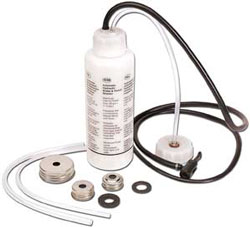
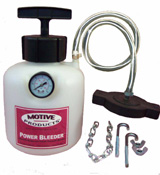
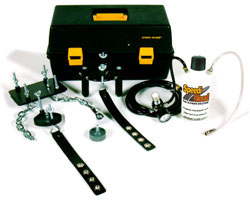
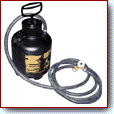
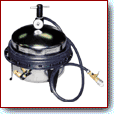
Bleeding Components
Master Cylinder Priming In-Vehicle or Bench
WARNING: Brake fluid contains polyglycol ethers and polyglycols. Avoid contact with eyes. Wash hands thoroughly after handling. If brake fluid contacts eyes, flush eyes with running water for 15 minutes. Get medical attention if irritation persists. If taken internally, drink water and induce vomiting. Get medical attention immediately.
CAUTION: Do not allow the brake master cylinder reservoir to run dry during the bleeding operation. Keep the brake master cylinder reservoir filled with the specified brake fluid. Never reuse the brake fluid that has been drained from the hydraulic system.
CAUTION: Brake fluid is harmful to painted and plastic surfaces. If brake fluid is spilled onto a painted or plastic surface, immediately wash it with water.
NOTE: When any part of the hydraulic system has been disconnected for repair or installation of new components, air can enter the system and cause spongy brake pedal (2455) action. This requires bleeding of the hydraulic system after it has been correctly connected. The hydraulic system can be bled manually or with pressure bleeding equipment.
NOTE: When a new brake master cylinder (2140) has been installed or the system has been emptied, or partially emptied, it should be primed to prevent air from entering the system.
For in-vehicle priming, disconnect the brake lines.
For bench priming, mount the brake master cylinder (2140) in a vise.
Install short brake tubes with the ends submerged in the brake master cylinder reservoir (2K478), and fill the brake master cylinder reservoir with High Performance DOT 3 Brake Fluid C6AZ-19542-AB or equivalent DOT 3 fluid meeting Ford specification ESA-M6C25-A.
Have an assistant pump the brake pedal (2455), or slowly depress the primary piston until clear fluid flows from both brake tubes, without air bubbles.
If the brake master cylinder has been primed at the bench, install it in the vehicle. For additional information, refer to Section 206-06 .
Remove the short brake tubes, and install the brake outlet tubes.
Bleed each brake tube at the brake master cylinder as follows:
Have an assistant pump the brake pedal, and then hold firm pressure on the brake pedal.
Loosen the rear most brake tube fittings until a stream of brake fluid comes out. While the assistant maintains pressure on the brake pedal, tighten the brake tube fitting.
Repeat this operation until clear, bubble-free fluid comes out.
Refill the brake master cylinder reservoir as necessary. Repeat the bleeding operation at the front brake tube.
Master Cylinder Priming 4.6L
CAUTION: Use only bleed screws on the engine side of the brake master cylinder (2140). The hydro-boost bleed screw, located near the dash on the hydro-booster casting, is for the booster cavity filled with power steering fluid, not brake fluid.
Repeat Step 2 for bleeder screw farthest from hydro-booster.
Caliper
NOTE: It is not necessary to do a complete brake system bleed if only the disc brake caliper (2B120) was disconnected.
Repeat the system bleed procedure as outlined in Steps 1 through 5.